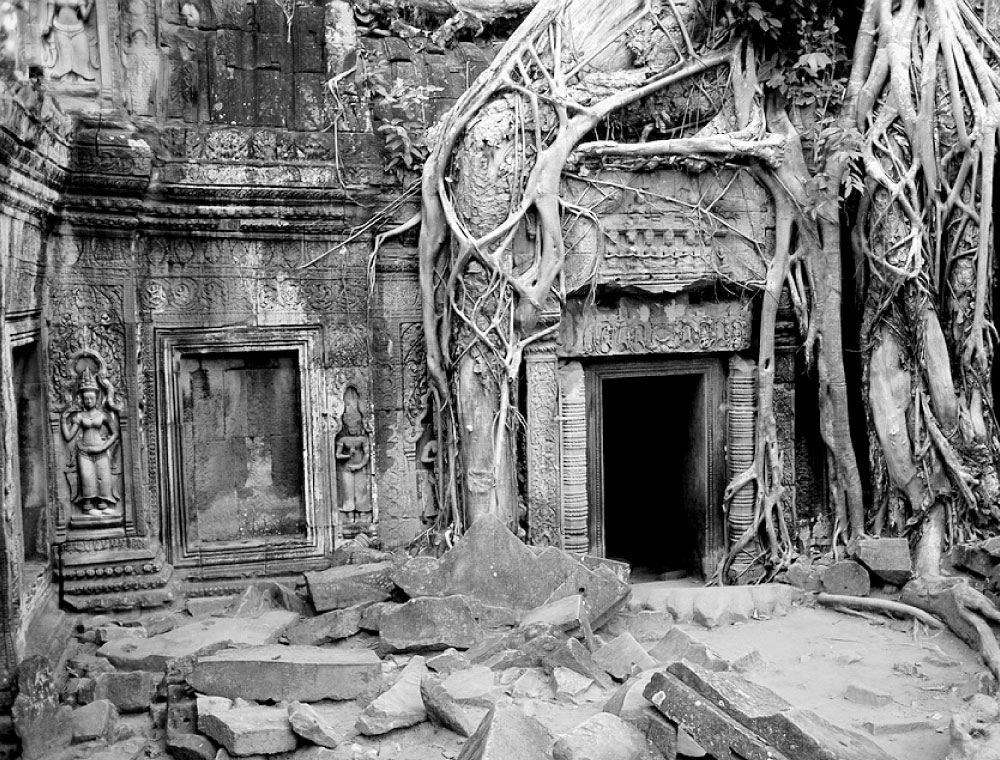
Phnom Penh is a surprisingly large city, and each of its quarters has a remarkably different character. Around the centrally located market, traffic is hectic and the atmosphere buzzes with newly-found commercial zeal. In the embassy district there are refurbished colonial villas housing diplomatic personnel and private homes with large gardens. Currently, besides the two locally well known malls, Sorya and Sovanna, more shopping centres and sky scrapers are springing up in conjunction with the city’s modernization. The most attractive part of the city is the long riverfront with bars and restaurants where visitors and locals gather to watch the sunset.
WITHIN CITY
APSARA ARTS ASSOCIATION
The Apsara Arts Association was established in 1998 targeting the development of Khmer culture. As a private organization run by a professional Khmer dance teacher and funded by overseas donors, the Association offers free instruction in Khmer classical and folkloric dance, and music to children ages 6 and over. The Association’s main focus is supporting underprivileged children and orphans.
CENTRAL MARKET
Originally built in 1935, the market was designed by French architects. At its commencement, it was the biggest market in Asia and most famous for its unique style and availability of products satisfying all local demand. Likewise, tourists may also find clothes and many souvenirs made from silk, silver, gold, and precious stones here.
CHEUNG EK KILLING FIELD
Cheung Ek is situated approximately 15 kilometres south-west of Phnom Penh or approximately within a 30 minutes drive. Here more than 17,000 civilians were killed and buried together in mass graves, many of whom were transported here after detention and torture in Toul Sleng. There were 86 tombs with 8,785 dead bodies including men, women and children who were unearthed after the liberation of the Khmers Rouges. Some of those skulls, bones and pieces of clothing are now kept in the nearby massive stupa which houses 8,000 skulls exhumed from the graves.
NATIONAL MUSEUM
Located near the Royal Palace, Cambodia's National Museum offers a charming setting for a stunning collection of ancient Khmer art. The sculptures date from both the Angkorean and pre-Angkorean eras. These exhibits are complemented by more recent examples of Cambodian art. The museum built between 1917 and 1920 is a terra-cotta-roofed structure of traditional Cambodian design. Apart from artistic treasures, the building is also a home to a large colony of Cambodian free-tail bats. The colony has resided in the building's rafters for years and is believed to be the largest group of bats living in a man-made structure in the world.
ROYAL PALACE
Situated on the site of the former Citadel, the Royal Palace was built by King Norodom in 1866 on the Mekong river bank. Inside its gleaming yellow walls are the Throne Hall; the Chan Chaya Pavilion, specially constructed for performances of classical Cambodian dance; the Napoleon III Pavilion offered to King Norodom by Queen Eugenie, wife of Napoleon III; and the King and Queen's residential quarters. Nowadays, only the Silver Pagoda may be visited.
RUSSIAN MARKET (TUOL TUMPOUNG MARKET)
Russian Market in the south of the city is located at the corner of Streets 155 and 444. It is a maze of narrow, dark alleyways crammed with stalls holding a vast selection of bargain souvenirs including: clothing; silverware; silk; bags; DVDs; CDs; and ceramics. Today this market is famous for its unique style of souvenirs made from clothes, and silk.
SOVANN PHUM ART ASSOCIATION & ART GALLERY
Sovanna Phum (Golden era) is an independent Khmer art association in Phnom Penh. Established in 1994, the association was created to provide Khmer artists opportunities to perform their craft, earn a living, and aim to revive, preserve and promote the treasures of Khmer culture to local and international audiences. Furthermore, there are many performances such as Khmer 2Classical & Folk Dances, Initiation of Art, Hanuman and Giant Drum, and many others promoted by the organization.
SILVER PAGODA
Silver Pagoda, also known as the Pagoda of the Emerald Buddha, is located in the Royal Palace. The floor is constructed of 5,000 silver tiles and at the pagoda’s centre is a magnificent 17th century emerald Buddha statue made of baccarat crystal. The walls enclosing the pagoda are covered with frescoes depicting episodes from the Khmer version of the Ramayana.
TOUL SLENG GENOCIDE MUSEUM (S-21)
Prior to 1975, Toul Sleng was a high school. When the Khmer Rouge came to power it was converted into the S-21 prison and interrogation facility. Inmates were systematically tortured and executed in the killing fields of Choeung Ek. S-21 processed over 17,000 people and only seven of whom have survived. The building now serves as a museum, a memorial and testament to the madness of the Khmer Rouge regime. Much has been left in its previous state after the Khmer Rouge had abandoned it in January 1979. The prison kept extensive records, and thousands of photos of their victims (many of which are currently on display). Paintings of torture at the prison by Vann Nath, a survivor of Toul Sleng, are also on display.
WAT PHNOM
According to local legends, Wat Phnom was founded in 1372 when Lady Penh discovered four Buddha statues. She decided to create the hill (phnom) at the site, and atop the hill she created a small temple (wat) to house the statues. Eventually the area became known as Phnom Penh in recognition of Lady Penh and the hill. The current temple contains the remains of King Ponhea Vat (1405-1467) who was responsible for relocating the capital from Angkor to Phnom Penh in 1422.
The hill today is a busy site as the temple is active and draws many local people. Here visitors may enjoy an elephant ride (additional fees may apply) after paying an entrance to Wat Phnom of US$1.
OUTSKIRTS OF CITY
KOH DACH
Koh Dach or the Silk Island can be reached by either an hour riverfront cruise boat, which stands by along Sisowat Quay, on a scenic route across fishing villages up the Mekong River or a 24km drive from city on National Route #6 to Koh Dach’s ferry dock. The excursion to the village is one of the most sensationally, educationally, and culturally preferable tours for those who desires to not simply visualize but also feel and learn about the authentic rural life of Silk Island. Initially, visitors will be amazed by traditional practices such as workers operating old hand looms under the stilted houses, and others dying and spinning silk on spinning wheels made of wood or bicycling parts.
POTTERY VILLAGE
Kampong Chhnang is famous for its pottery across Cambodia. The Khmer’s word Chhnang in English means pot and, of course, the first thing that comes to one’s mind is the sense that the countryside’s association with pottery. You bet! Pottery Village is a rural village where locals make their living by creating clay pots in different forms, sizes, and shapes. The production is usually, in form of the fire-hardened clay from this area, sold on the riverside stores within the province and exported through mobile stores taken in the shape of oxen pulling wooden carts stacked high with various pieces of pottery (with straw packed around them to prevent road vibration from cracking the sellers’ wares).
SILVERSMITHS VILLAGE – KAMPONG LUONG
Not only are Kampong Chhnang people famous for clay pot creation, but they are also renowned for the art of turning silver into teapots, pitchers and trays, and other articles into animals shape serving as souvenirs or decoration.
In old English, the suffix of Smiths is often used to associate those amazing at crafting. According to such practice, Kampong Chhnag may house a village named, “Silversmiths Village” for its famous silver production.
OUDONG
King Soryopor founded the former Cambodian Capital of Oudong in 1601. Strategically built 40km north of Phnom Penh, the Khmer Rouge established positions at Oudong during its final offensive in 1974-75. Heavy bombing severely damaged the area but remaining ruins include: the canals; bridges; terraces; and pagodas built in Oudong by King Anh Duong (1841-1850). It remains a pilgrimage site for those visiting to pay homage to the legacy of Cambodia's kings.
PHNOM CHISOR
Phnom Chisor Temple was built during the 11th century and features carved lintels of sandstone, wood carvings and Buddha statues. A two and a half metre wall historically served as a line of defence circles the entire complex. Currently, Phnom Chisor stands on a hilltop 55km from Phnom Penh.
TONLE BATI
Tonle Bati is home to Ta Prohm Temple, built in the 12th century by King Jayavarman VII. This Buddhist temple is renowned for its refined bas-relief. Nearby is Yeay Peau Temple which features remarkable wood carvings. Tonle Bat Lake has a beach and food stalls where local residents visit to relax during the weekends.
CHAMBOK ECOTOURISM SITE
Chambok is heaven on earth for any nature and adventure lovers. This destination offers a number of activities for those looking to travel off the beaten track. It was initially developed in 2001 by a local environmental organization named Mlup Baitong, in cooperation with the Ministry of Environment, with the purpose of addressing the issues of deforestation and community livelihood for the villagers dependent on the forest to produce charcoal to earn a living. Through community education programs, the villagers were shown the benefits of protecting the forests for future generations. Since then, the Chambok ecotourism project was developed to provide an alternative income to the locals. Managed by the villagers of Chambok Commune, all revenues from tourism remain within the community, and help them protect and manage the forest in a sustainable fashion. Like Chi Phat, Chambok serves as a proto-typical success story in community-based ecotourism in Cambodia.
Located half way from Phnom Penh to Sihanoukvile, a Chambok exploration can be completed in combination with the transfer between the two towns during a day trip. For those looking to experience a local touch, a one-night stay with the local community is recommended. The site offers a wide range of outdoor activities and attractions such as:
* Trekking, biking, hiking, and swimming in the stream;
* Bird watching and wildlife viewing;
* Picnicking or enjoying local cuisine at Woman Restaurant;
* Experiencing Cambodian rural lifestyle on an ox-cart ride;
* Home staying in a traditional Khmer house;
* Joining with the locals in their daily work in the field; and
* Watching traditional shows and dancing around a bonfire.
KIRIROM NATIONAL PARK
Located at Phnom Sruoch District in Kampong Speu Province, Kirirom National Park is established on a seven hundred metres hill covering an area of over 35,000 hectares in the Elephant Mountains. The elevation is approximately 670 metres, high enough to support a large pine forest quite distinct from most of the country's tropical jungle. Kirirom National Park, a high altitude plateau, is known for its uniquely high elevation pine forest, which forms the headwaters for numerous streams feeding Kampong Speu Town.
The name “Kirirom” (meaning “Mountain of Joy”) was given by the King of Cambodia. This park is part of the “Southwest Cluster Protected Areas” which include: Phnom Bokor; Preah Sihanouk; and Kep National Parks, and also home to many endangered species such as the pleated gibbon. Attractions to this site include its spectacular scenery and its astonishing waterfalls.



